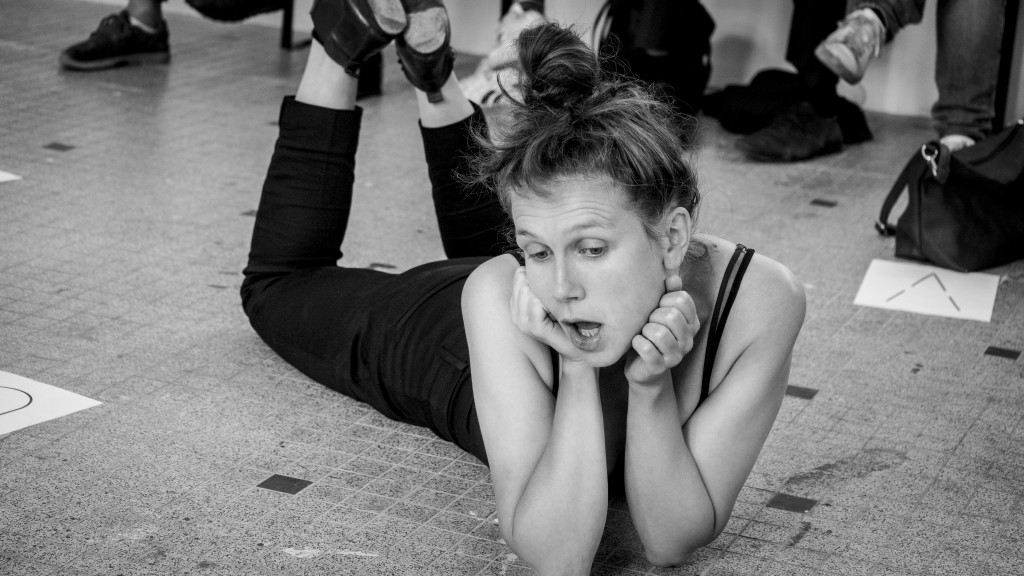Violaine Lochu, polyphonic performer by Rozana Azimi in Le Monde, 2018
Laureate of the Aware prize for women artists, the artist, inspired by the sounds of Nina Hagen and Cathy Berberian, is exhibiting her work at the Chanot Contemporary Art Center, in Clamart, France, until March 25th.
Is she a bird woman or a bearded woman? A klezmer singer or a feminist artist? Violaine Lochu is all of the above, all at once. A plural identity which contributes to the growing fame of this 30-year-old performer who has made an instrument of her voice. Having won the most recent Aware prize which rewards women artists, her work is currently on display at the Chanot Contemporary Art Center, in Clamart, France.
When she was young, she played piano, unassumingly. At the age of 18, she sought to move away from the confinement of classical music. As a student at the Fine Arts School of Cergy, France she spent her summers travelling across Europe, accordion over her shoulder, searching for new sounds. In Lecce, in the Apulia region of Italy, she fell in love with pizzica pizzica, a dance derived from the tarentella. In Bulgaria, she fell under the spell of polyphonies. At the age of 24, she took up playing klezmer music and learned Yiddish, before immersing herself… in the culture of the Sámi people of Lapland.
Today, her work is enriched just as much by the sounds of Nina Hagen, Cathy Berberian and Meredith Monk. Unbounded curiosity combined with immense empathy are her greatest strengths. “I dive 500% into everything, I let myself be inhabited by sounds and I emerge with forms, » she says. “I am not looking for a synthesis, but a junction, where my voice and that of the other person end up becoming a new, third voice.”
During her performances, which are close to sound poetry, her voice becomes elastic, reaching high pitches, squeaking with feedback or whistling in murmurs. Equally as agile, her body, in turns, becomes mineral, animal or plantlike, blurring these identities. Questions around gender inhabit her. In the performance piece T(h)race, she reinvents the Amazon language based off of The Histories byHerodotus and the essay This Sex Which Is Not One by the feminist linguist Luce Irigaray. “My feminism is that of Irigaray or Donna Haraway,” explains the young woman. “I refuse domination as a whole, that of a sex over another, but also of humans over nature and animals.”
